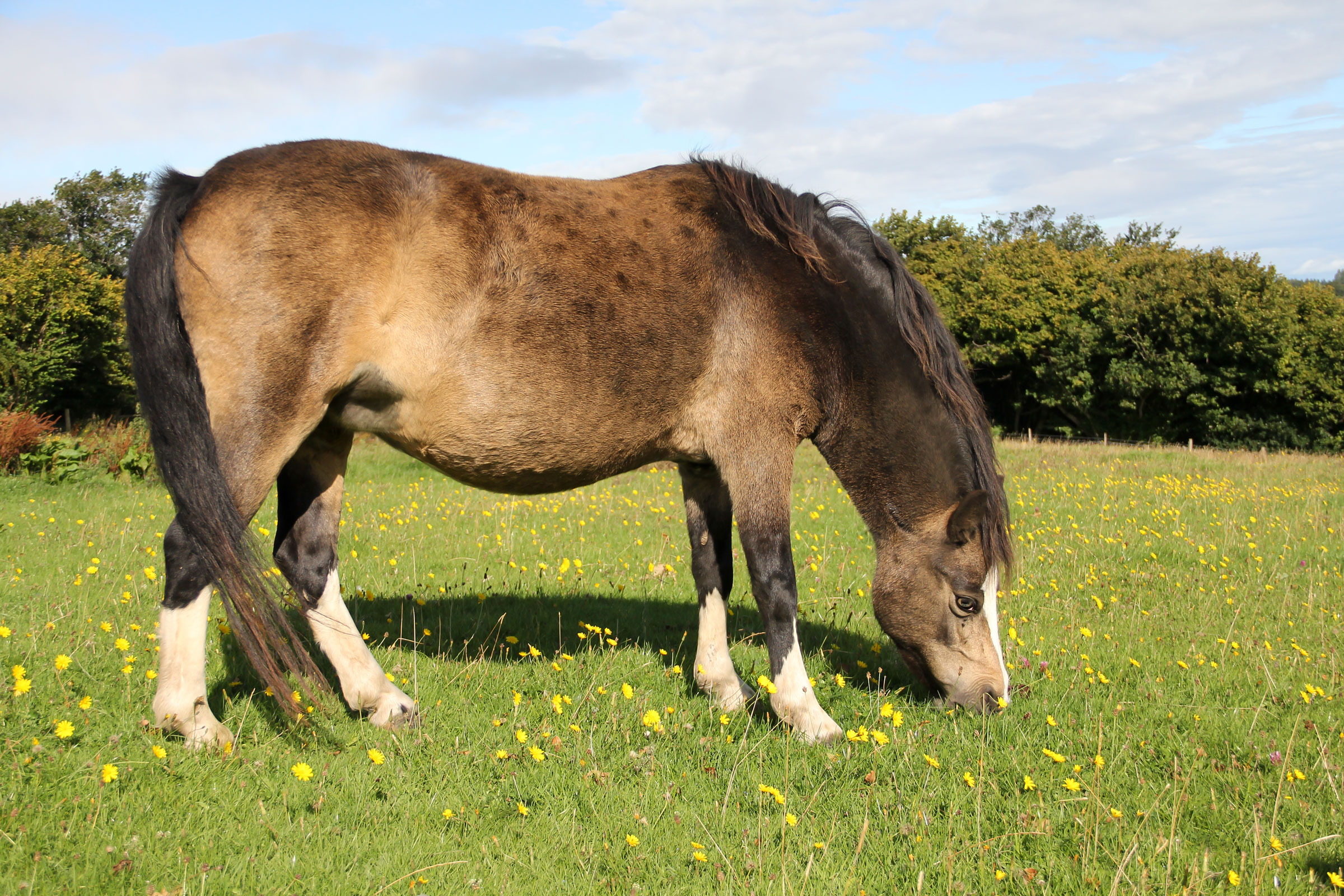
Overweight horses are at risk of health problems that range from reproductive problems to heat intolerance, metabolic problems to laminitis.
Links in articles are part of an Amazon Affiliate program that provides income to support this brand. Links are chosen by our editors.
“Fat is not a metabolically inactive tissue,” explained Clair Thunes, PhD, an independent equine nutritionist based in California (summit-equine.com). “It releases inflammatory cytokines that can negatively impact health. Obesity is one component of equine metabolic syndrome, the other components are a history of laminitis and elevated insulin.”
It all boils down to calories in vs. calories out.
Horses become overweight by consuming more calories than they burn. It is that simple. There might be situations that reduce the horse’s energy requirements, but calories must be restricted to support weight loss. Exercise helps, but dietary intervention (i.e., calorie restriction) is essential.
Forage should be the main or only source of calories for most non-competitive horses. Hay should have adequate protein to provide the horse adequate amounts for his daily needs. If hay is restricted to reduce calories for weight loss, it should be balanced with the proper amount of a fortified feed or an equine vitamin-mineral balancer product to ensure adequate nutrient intake.
Remember that a balancer pellet is concentrated in protein, vitamins and minerals and is designed to be fed in low quantities.
Beware of horses on “diets” with owners who feel sorry for them and give them extra hay, grain or treats.
A hay analysis is an important component of designing a diet for an overweight horse. “Take a representative core sample from 10 bales and send it to a forage lab that will analyze it based on calories,” said Megan Shepherd, DVM, PhD, DACVN (American College of Veterinary Nutrition). She is a clinical assistant professor in nutrition at the Virginia-Maryland College of Veterinary Medicine (vetmed.vt.edu/vth/services/nutrition).
Once the analysis is back, it’s best to work with a veterinarian or equine nutritionist to create a ration that restricts calories but does not deprive the horse of needed protein, vitamins or minerals.
Without a forage analysis, a ration can be estimated based on a percentage of the horse’s ideal body weight. “Simply put, the owner should work with a veterinarian to determine ideal body weight, then feed 1.5% of ideal body weight in hay,” Shepherd explained. For example, a 1,000-pound horse would receive 15 pounds of hay each day, preferably in several small meals.
“Overweight horses do not need grain or commercial concentrates because these foods contain a lot of calories, and the horse needs to have calories restricted,” said Shepherd. “The only commercial pelleted feed to consider is a balancer pellet.”
Thunes said she is cautious about reducing forage because “horses need to eat large quantities of forage.” If the available forage is so superior in quality that it is too calorie-dense for a specific horse, and a lower-calorie source of forage is not a possibility, restricting intake of forage might become a necessity, Thunes added.
This means you might feed the horse at 1% of ideal body weight with a balancer pellet. Keep in mind that hay should be weighed; don’t let owners feed by the flake. You or the owner might need to pre-weigh out feedings of hay to ensure that the horse isn’t over-fed.
Another option for easy keepers maintained on pasture is to use a grazing muzzle or to substitute a dry lot for pasture turnout. “Horses allowed to graze without a muzzle will make up for lost time,” Shepherd noted. Research has shown that horses wearing grazing muzzles will focus on eating more in a shorter amount of time when the muzzle is not worn.
Increased exercise is another option in reducing a fat horse’s weight. If you can encourage your fat horse’s owner to ride more days per week or increase exercise intensity when riding, it can help burn more calories and reduce body weight.
“If the horse is unfit, though, this needs to be done carefully over time to avoid causing problems with soundness,” Thunes cautioned.
Stable and farm owners can help boarders create an exercise program that might include longer rides, more intense training, varied training (such as longing, obstacles or trail riding). If that owner doesn’t have time to ride more frequently, then perhaps they can pay someone else to ride the horse.
Writing a plan for horse weight loss can help owners be more disciplined and promote compliance.
Check out these equine nutrition books:
Introduction to Horse Nutrition
Equine Applied and Clinical Nutrition
Equine Nutrition and Feeding
Horse Health and Nutrition for Dummies
Understanding Equine Nutrition


